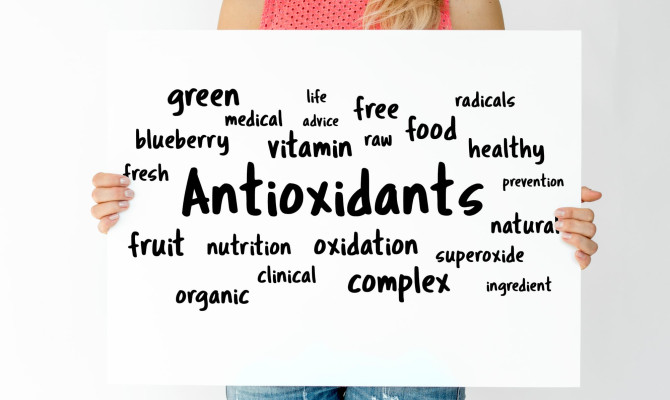Omega-3 : What are the sources and benefits

- Omega 3
- 16 Aug 2023
Overview
What is omega -3?
Omega-3 fatty acids, often known as omega-3 oils, are polyunsaturated fatty acids (PUFAs) that play critical roles in the body’s functioning. They are abundant in nature and significantly impact human physiology and diet. Omega-3s are essential for life, but the human body cannot generate enough. Therefore, people must obtain crucial nutrients like omega-3 fatty acids through food. The activities it performs within the body, dietary needs, supplies, interactions, and inadequacies are all covered in this article.

Facts to know about omega-3
- George and Mildred Burr identified the importance of fatty acids to health in 1929.
- Humans can only obtain the necessary omega-3 fatty acid ALA through diet because they cannot synthesize it.
- When ALA is present, our bodies can use it to create EPA and DHA.
Types
Different types of omega-3
There are three distinct kinds of omega-3 fatty acids, which may consist of:1Types | Researched based study from Clevelandclinic.org
- ALA or Alpha-linolenic acid is found predominantly in vegetable oils such as flaxseed, soybean, and canola. The human body mainly utilizes ALA from food for energy, with minimal conversion to EPA and DHA.1Types | Researched based study from Clevelandclinic.org
- Eicosapentaenoic acid (EPA) – discovered in algae and seafood, mainly fish.
- Docosahexaenoic acid (DHA) – predominantly seen in algae and fishes.
Benefits
What are the benefits of Omega 3 Fatty acid?
Omega-3s work in the body in several ways
- Omega 3 is needed for the proper cellular function in the body.
- They play a crucial role in producing and supporting cellular connections in our cell membranes.
- They act as a precursor in synthesizing hormones that regulate blood clotting, blood vessel wall relaxation and contraction, and inflammation.
- Gives the body energy and promotes the health of numerous bodily systems.
- While essential to all of our cells, the cells in our brains and eyes contain a lot of omega-3s.
- Additionally, omega-3s offer calories, which give our bodies energy.2Biological role| Researched based study from Harvard.edu
- Heart health – they lower blood pressure and triglycerides in the blood and increase HDL or good cholesterol, thus decreasing the chance of atherosclerosis, stroke, and other heart diseases.5Significance| Researched based study from Ahajournals.org
- Baby’s health and development – omega-3 intake during pregnancy may help fetal growth, especially the brain and eyes, and boosts the baby’s weight and length of stay in the womb. Eating fish and other seafood with low mercury levels, such as salmon, sardines, and herring, is essential.6Significance| Researched based study from Nlm.nih.gov
- Rheumatoid arthritis – using omega-3 supplements in addition to regular RA drugs and other treatments may help manage RA.7Significance| Researched based study from Nlm.nih.gov
- Cancer prevention – Omega-3 may assist in preventing cancer, including breast cancer.8Significance| Researched based study from Nlm.nih.gov
- Cognitive functions – increases brain blood flow and enhances learning, memory, cognitive health, and brain function.9Significance| Researched based study from Nlm.nih.gov And may help with Alzheimer’s, dementia, and other cognitive problems.
- Dry eye – Omega-3 fatty acids aid in reducing eye irritation and also seem to enhance the production of the oily component of tears, thus decreasing the symptoms of dry eyes.10Significance| Researched based study from Aao.org
- Age-related macular degeneration (AMD) – Older folks lose vision primarily due to AMD. The development of aberrant blood vessels that arise in macular degeneration caused by age and other retinal illnesses may be slowed down by omega-3 fatty acids.10Significance| Researched based study from Aao.org
- Additionally beneficial for depression, premenstrual syndrome, menopausal night sweats, maternal depression, type 2 diabetes, and asthma.11Significance| Researched based study from Nlm.nih.gov
Sources

What are the different sources of omega-3?
The following food sources and dietary supplements both include omega-3 fatty acids:3Sources| Researched based study from Nccih.nih.gov
Food sources
- People can boost their omega-3 consumption by eating more particular types of seafood, seeds, and nuts.
- Seafood, particularly cold-water fatty fish like sardines, herring, tuna, and salmon.
- Seeds and nuts such as flaxseeds, chia seeds, and walnuts.
- Oils from a plant source, such as flaxseed, canola, and soybean oils.
- Fortified foods include some milk varieties, yogurt, newborn formula, soy drinks, and eggs.3Sources| Researched based study from Nccih.nih.gov
A supplement
The following are examples of omega-3 nutritional supplements in a variety of quantities and forms:3Sources| Researched based study from Nccih.nih.gov
- The fish oil.
- Oil from krill.
- Oil from cod liver.
Sourced from vegetarians
- Oil made from flax seeds.
- Algal oil.
Dosage
Dietary requirement
Based on a person’s gender and age, they may need different amounts of omega-3 each day. AI is the typical daily recommended intakes in grams (g).4Dosage| Researched based study from Nih.gov
For infants till one year (the AIs refer to total omega-3s for newborns )
- Birth to 6 months – 0.5 g/day
- 7 to 12 months – 0.5 g/day
The AIs are limited to only ALA for those one and older since ALA is the only type of omega-3 necessary.
For kids
- 1 to 3 years – 0.7 g/day
- 4 to 8 years – 0.9 g/day
9 to 13 years
- Men – 1.2 g/day
- Women – 1.0 g/day
14 to 18 years
- Men – 1.6 g/day
- Women – 1.1 g/day
- Pregnant women – 1.4 g/day
- Lactating mothers – 1.3 g/day
19 to 50 years
- Men – 1.6 g/day
- Women – 1.1 g/day
- Pregnant women – 1.4 g/day
- Lactating mothers – 1.3 g/day4Dosage| Researched based study from Nih.gov
51 years and above
- Men – 1.6 g/day
- Women – 1.1 g/day
Deficiency
Identify the symptoms of deficiency
Symptoms of an omega-3 shortage include
- Scaly, dry skin.
- An increase in acne.
- An irritated, itchy, and red rash.
- Dry hair.
- Hair thinning caused by hair loss.
- Stiffness and joint pain.
- Dry eyes.
- Depression.
Those at risk for deficiencies
- Fat restriction in the diet.
- Malabsorption.
- Patients under PUFA-free parenteral feeding.
- Breastfeeding and pregnant women.
Side effects
Side effects of omega-3
If there are any negative consequences, they are often minor and include the following
- A lousy taste in the mouth.
- A bad breath.
- Heartburn.
- Itching.11Side effects| Researched based study from Nlm.nih.gov
- Vomiting.
- Fatigue.
- Stomach ache.
- Constipation.
- Diarrhea.
- Headache.
- Smelly sweat.
The risk of an overdose could be the following
- Might make bleeding more likely.
- Mixed research results regarding how omega-3 fatty acids might influence prostate cancer risk.
Precautions
Who should take precaution while taking omega-3?
In the following patients, caution and routine monitoring are advised
- Those on anticoagulant and antiplatelet medications since omega-3 fatty acids can lower platelet activity.
- Individuals who have seafood allergies.
- People who are hypersensitive to a specific formulation of OM3FAs.11Precautions| Researched based study from Nlm.nih.gov
Interactions
Interaction with other medicines
Before taking medicine, discussing any potential interactions between omega-3 dietary supplements and the medications a person takes with a healthcare professional is advised.
- For instance, taking high doses of omega-3s, warfarin, other anticoagulants, and non-steroidal anti-inflammatory drugs (NSAIDs) may result in bleeding issues.12Interactions| Researched based study from Nccih.nih.gov
Takeaway
Takeaway
People should consume a majority of nutrients through food and drink. Foods provide nutrients that are good for the body, including minerals, vitamins, fiber from the diet, and other substances. When it is impossible to achieve nutrient requirements, especially during particular life phases like pregnancy, enriched foods, and nutritional supplements may be helpful in some circumstances. Furthermore, people should always treat supplements as pharmaceuticals and consult a doctor before using any.
Any feedback on this article?
 This Articles content was accurate
This Articles content was accurate Very Informative Article
Very Informative Article I have a question or a comment
I have a question or a comment
 This article contains inaccurate content
This article contains inaccurate content This article was not helpful
This article was not helpful I have a question or a comment
I have a question or a comment
We appreciate your helpful feedback!
Checkout our social pages
References
-
Cleveland Clinic
Omega-3 Fatty Acids | Types
-
Harvard T.H Chan
Omega-3 Fatty Acids: An Essential Contribution | Biological role
-
National Center for Complementary and Integrative Health
Omega-3 Supplements: In Depth | Sources
-
National Institutes of Health
Omega-3 Fatty Acids-Fact Sheet for Health Professionals | Dosage
-
American Heart Association
Omega-3 Fatty Acids for the Management of Hypertriglyceridemia: A Science Advisory From the American Heart Association | Significance
-
National Library of Medicine
Omega-3 Fatty Acids and Pregnancy | Significance
-
National Library of Medicine
The Effect of Omega-3 Fatty Acids on Rheumatoid Arthritis | Significance
-
National Library of Medicine
Protective Effects of Omega-3 Fatty Acids in Cancer-Related Complications | Significance
-
National Library of Medicine
Effects of Omega-3 Polyunsaturated Fatty Acids on Brain Functions: A Systematic Review | Significance
-
American Academy of Ophthalmology
The Benefits of Fish Oil for Dry Eye | Significance
-
National Library of Medicine
Omega-3 Fatty Acids | Significance
-
National Center for Complementary and Integrative Health
5 Things To Know About Omega-3s for Heart Disease | Interactions




































